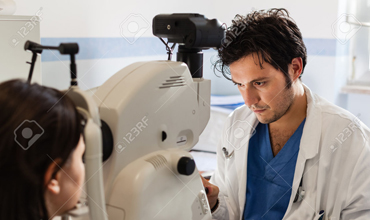Fundus camera captures a photograph of the back of the eye. Specialized fundus cameras consist of a microscope attached to a flashed enabled camera. The patient sits at the fundus camera with their chin in a chin rest and their forehead against the bar. An ophthalmic photographer focuses and aligns the fundus camera. A flash fires as the photographer presses the shutter release, creating a fundus photograph.
The main elements that can be visualized on a fundus photo are the central and peripheral retina, optic disc and macula. Fundus photographs are visual records which document the current appearance of a patient’s retina. They allow the physician to further study a patient’s retina, to identify retinal changes on follow-up, or to review a patient’s retinal findings with a colleague.
Fundus photographs are routinely ordered in a wide variety of ophthalmic conditions. For example, glaucoma (increased pressure in the eye) can damage the optic nerve over time. Using the photographs, the physician studies subtle changes in the optic nerve and then recommends the appropriate therapy
